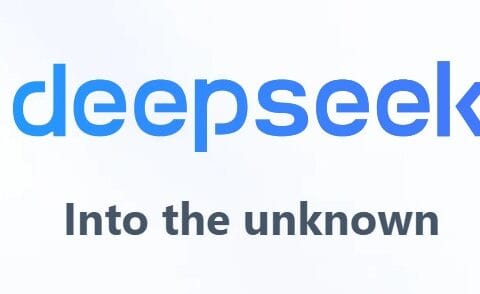Last Updated on March 21, 2024 12:29 pm by Laszlo Szabo / NowadAIs | Published on March 21, 2024 by Juhasz “the Mage” Gabor
SigmaZero Experiments for IARPA on CAPSTONE™
WESTMINSTER, Colo., March 21, 2024 — Today, Advanced Space, LLC, a leading space tech solutions company announced the successful use of machine learning in cislunar space. The Cislunar Autonomous Positioning System Technology Operations and Navigation Experiment (CAPSTONE™) spacecraft has been busy testing new software that is laying the groundwork for a substantial and transformative advance in autonomous navigation in orbit.
SigmaZero is a Neural Network (NN) enabled software suite that enables the detection of problems with spacecraft navigation – for example, identifying and labeling small accelerations that could drive the spacecraft off course if not accounted for correctly. More importantly, SigmaZero helps spacecraft perform vital activities like orbit determination in conditions where ground controllers are not readily available; this sort of capability will be needed to support the long-term exploration, development, and settlement of space. This is part of a study for the Intelligence Advanced Research Projects Activity (IARPA) under the MicroE4AI (Microelectronics for Artificial Intelligence) program. The capabilities of SigmaZero build upon the Advanced Space mission of developing cutting-edge technologies like machine learning (ML) that improve onboard spacecraft autonomy.
IARPA’s Response
“We are excited to learn of the SigmaZero experimental results as they represent a significant milestone in the lifecycle of our MicroE4AI program,” said IARPA Director, Dr. Catherine Marsh. “Launched in 2021, MicroE4AI’s goal is to develop resilient computing tools that drive innovation in microelectronics, hardware, software and algorithm-architecture. We are grateful to our teams of performers, including Advanced Space, who are working diligently to help us meet our program’s goals.”
The Experiments
On January 29, Advanced Space executed an onboard test of the SigmaZero software onboard CAPSTONE. The goal of this experiment was to demonstrate anomaly classification on a spacecraft using SigmaZero. When completed, the CAPSTONE computer downlinked the neural network output as telemetry packets, and the Advanced Space team verified that the result precisely matched the ground-computed solution. In this case, the input consisted of simulated data where the spacecraft performed a small maneuver that was not accounted for in the navigation algorithm (Kalman filter).
Additionally, on March 10, we conducted a second test of SigmaZero on CAPSTONE. This time we tested one example each of 9 anomaly classes, including: mismodeled gravity field, spinning spacecraft, outgassing, momentum desaturation maneuver, mismodeled finite burn, radio dropout, mismodeled solar radiation pressure, mismodeled atmospheric drag, and nominal. As with the first test, the inputs are simulated data of spacecraft in Earth orbit where the navigation algorithm fails in subtle ways. Although the current version of SigmaZero is trained on Earth-orbiting data, the technology is applicable equally in cislunar and interplanetary environments. Once again, the Advanced Space team downlinked the neural network model outputs and verified that all 9 test cases precisely matched the expected values.
The Implications
So, what does this mean for SigmaZero and for spacecraft navigation in general?
Dr. Nathan Ré, Principal Engineer and Project Lead for SigmaZero, explained, “Whether used on the ground or in space, SigmaZero instantaneously draws insights from spacecraft navigation data that traditionally have required the detailed review of a human expert. As spaceflight activity continues to grow exponentially, automation is essential to safe, reliable operations.”
“These tests demonstrate the effectiveness of our process to bring state-of-the-art machine learning models quickly to the essential ‘edge’ device: a small satellite near the Moon. Leveraging ML gives us an order-of-magnitude improvement in the time and cost required for flight software development and testing,” added Tyler Hanf, Software Engineer.
And although it wasn’t the main purpose of these experiments, the upload and simulation work also may provide insights into better managing and deploying new flight software (specifically Core Flight System applications) to CAPSTONE throughout its extended mission phase.
The mission goes on.
ABOUT ADVANCED SPACE:
Advanced Space (https://advancedspace.com/) supports the sustainable exploration, development, and settlement of space through software and services that leverage unique subject matter expertise to improve the fundamentals of spaceflight. Advanced Space is dedicated to improving flight dynamics technology development and expedited turn-key missions to the Moon, Mars, and beyond.
This research is based upon work supported in part by the Office of the Director of National Intelligence (ODNI), Intelligence Advanced Research Projects Activity (IARPA), via [2022-2011100600002]. The views and conclusions contained herein are those of the authors and should not be interpreted as necessarily representing the official policies, either expressed or implied, of ODNI, IARPA, or the U.S. Government. The U.S. Government is authorized to reproduce and distribute reprints for governmental purposes notwithstanding any copyright annotation therein.
SOURCE Advanced Space











